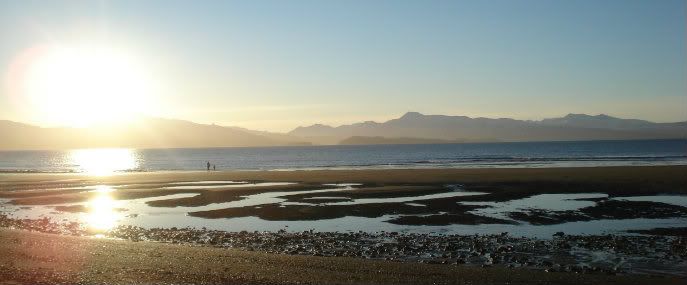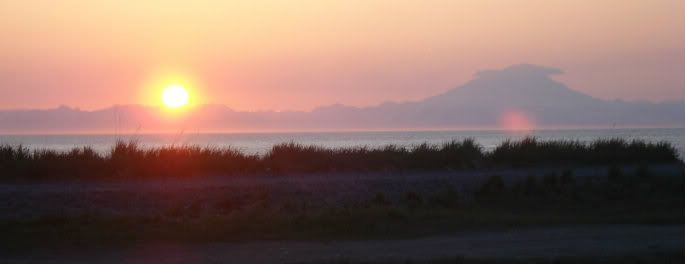
“The ship was a fabulous passenger liner, larger than any other that had ever been built, and it was called unsinkable. Sailing across the North Atlantic in the month of April, with many rich and famous passengers aboard, it struck an iceberg and sank. Hundreds of passengers lost their lives because there were not enough lifeboats. The name of this ship? It was called the Titan. But it only existed in a novel called Futility by Morgan Robertson, published in 1898…” from 882 ½ Amazing Answers to your Questions about the Titanic, by Hugh Brewster and Laurie Coulter.
It’s no great revelation that, as the years and decades mount, the span of human history comes to form an odd sort of prism, through which the increasingly distant events of the past are refracted and dissembled into discernibly different elements. On the centennial anniversary of the sinking of the RMS Titanic, one is hard pressed to avoid the attention being paid this memorial milestone of one hundred years having passed since those tragic events transpired. There is certainly no shortage of articles touching upon the basic facts surrounding the iconic ship’s construction and demise, nor is one left wanting for a more thorough analysis of the sinking itself. We now know more than ever before how the ship behaved following the initial impact, following its path to the current resting places of the resulting fragments along the ocean floor. There have even been a fair number of pieces analyzing the general fascination with which we view the Titanic’s story, and there are few who fail to catch sight of its prominence in pop culture, thanks to such efforts as James Cameron’s epic film. Many have explored the dichotomy of human hubris set against the harsh realities of unfeeling nature, as had clearly been the case even years prior to the ship’s eventual conception. Ultimately, in the last analysis, as is often the case once the bulk of our compulsion to reflect is satisfied, we are left with only the most wide-ranging, far-reaching of questions: What does it all mean?
To be sure, the Titanic’s origins were perhaps not so inspired as the romanticism of nostalgia may have made them out to be. Though we often consider the Titanic to be a grand, shining example of the technological, artistic talents (and yes, general hubris) of mankind, plans to build ships of this size were initially little more than a competitive marketing ploy. At a time when the most common and efficient means of traveling between Europe and North America was by ocean liner, two shipping companies battled for supremacy: the White Star Line, and the Cunard Line. By 1907, Cunard had proudly launched two luxury ships capable of traversing the Atlantic in only five days, the RMS Lusitania and the RMS Mauretania. The capacity for such swift travel quickly elevated the Cunard Line to prominence, and fast became the talk of the shipping world.

RMS Olympic and RMS Titanic
The White Star Line was naturally concerned with facing the challenge presented by its main competitor’s achievement. At a party held at the mansion of shipbuilder Lord William Pirrie, a conversation on these new ships between Pirrie and J. Bruce Ismay, chairman of the White Star Line, eventually led to the suggestion of larger, incomparably more luxurious ships. Thus a new line of ships was conceived: the Olympic, Titanic, and Gigantic.
Key to the tale of the Titanic’s demise is the notion that the White Star Line’s ships were designed to be unsinkable. Proof to the contrary notwithstanding, the sinking of this infamous vessel was in fact no small feat. The compartmentalized double hull was indeed a formidable method of attempting to reduce the likelihood of sinking. In truth it required a confluence of events that lend themselves to a vision of a conspiratorial notion of Fate to send the mighty vessel to the ocean floor. The Titanic was initially to embark upon its maiden voyage nearly a month sooner than it eventually did, but an accident in September of 1911 involving its sister ship, the Olympic, required shipbuilders to halt work aboard Titanic in order to make repairs aboard the ailing vessel. Thus the original launch date for Titanic was pushed back, from March 20th, 1912, to April 10th. This delay proved crucial to the circumstances surrounding Titanic’s demise, as recent theories have now suggested.
Though it was not necessarily unexpected that the Titanic might encounter the presence of ice along its North Atlantic journey, the hiring of a captain as experienced in sailing the North Atlantic as Capt. Edward Smith should have proven more than sufficient in avoiding such hazards. However, the amount of ice encountered, including massive icebergs like that which ultimately sunk Titanic, was not something anticipated by the ship’s crew. It is here where Fate played its hand. Recent analysis and speculation have put forth the following theory to explain the unusual hazardousness of Titanic’s route: The moon’s orbit, which varies in distance from the Earth over time, drew closer than it had in over 1,400 years. This, combined with an alignment of the Sun and Moon, produced gravitational conditions resulting in an unusually high tide a few months prior to Titanic’s sailing. In these elevated waters, the icebergs usually grounded off the coasts of Labrador, Newfoundland, and Greenland, were raised enough to free them from the ocean floor, loosing them upon the open waters of the Atlantic. Over the course of three months following their liberation, the icebergs drifted nearer to shipping lanes such as that which the Titanic sailed. Had the launch taken place in March as planned, it’s likely the iceberg which felled the Titanic would not yet have arrived to block the mighty ship’s passage. Thus, the delayed departure, unusually high tide, and simple lack of visibility which prevented earlier detection of the oncoming hazard, combined to doom the vessel’s maiden voyage.
And so, with eerily prophetic 19th century fiction, competitive marketing, technological achievement, seemingly cosmic interference, and a century between then and now to consider, what does it all actually mean? Is it, as it has often been characterized, merely a tragic and cautionary tale, warning against the overconfidence of humanity? The story of the RMS Titanic certainly serves such a purpose, though unsuccessfully, as shipbuilders went on to construct even larger ships only a few years after the Titanic’s sinking. More to the point, could such a message of warning explain the fascination with which many of us research and remember the event, or is there more to this tale than the loss of a ship and many of its passengers? I believe there is more truth to be found by observing the romanticism applied to the story, though not necessarily the sort of romance depicted in James Cameron’s film. Ultimately, the tale of the Titanic speaks to the core of humanity itself, and the indomitability of the human spirit.
Having taken place during an age of so much progress and transition into the fullness of a new age, yet prior to the great wars that would come to dominate the first half of the 20th century, the tragedy of the Titanic’s sinking provides a counterbalance that illuminates the boundless vision of the burgeoning modern world. The time surrounding the dawn of the 20th century featured an amount of intrepid progress and discovery then unmatched by any other time in human history. Central to this progress were the industries and advancements that made the swelling influx of a new immigrant population in America possible. As thousands upon thousands of people emigrated to the United States, so too did their talents, hopes, dreams, fears, and frailties journey to the American shore.
The story of the Titanic is more than simply an example of these advancements and dreams, it embodies them collectively. Encapsulated in that single, failed voyage, the spirit of a new era can be found intact, a perfectly blended combination of each of its elements. That a confluence of coincidences seemed to conspire against the fated vessel long before it set sail only adds to such a perspective. Mankind has always struggled against the forces of nature and the seemingly harsh winds of fortune. With each addition to our knowledge of this event, what may have once been a simple, yet catastrophic, tragedy becomes an ever more finely-crafted tale that appeals to us on an increasing number of levels. As this centennial milestone passes, one cannot help but marvel at both the story itself, and the century of curiosity and fascination that bridge the gap between then and now. And as we look from our present vantage to the future, with stories such as that of the Titanic’s epic voyage in mind, we can trust fully that our own progress and travails might one day prove just as fascinating one hundred years hence. Any stage of the journey may come to epitomize the age in which it takes place, and only through the brilliant prism of retrospect will we be able to reflect and once again ask, as we do now, what does it all mean?


Futility by Morgan Robertson

882 1/2 Amazing Answers to your Questions about the Titanic by Hugh Brewster, Laurie Coulter

Unsinkable: The Molly Brown Story by Joyce B. Lohse

Raise the Titanic by Clive Cussler

Explorations: A Life of Underwater Adventure by Robert D. Ballard

 I decided to go with a system. I would gather a list of my special education students and then narrow it down to those who are graduating seniors. This group has fought some difficult odds to get where they are at this point and deserve a gift. I decided to hunt them down individually and have a meaningful discussion rather than just slip a book in their direction between classes. In doing this individually, I ended up crossing campus dozens of times, and creating some great conversations. I didn’t prepare a speech or anything, so I just started talking with each student. Many of them were so excited as their faces lit up at the prospect of getting this gift, even stating “you mean, this is for ME?” that it was certainly a great energy charge for me. Of course, I had a few that listened to my reasons, looked at the book and said, “well, I’ll never read it anyway” and hand it back to me, but that gave me a chance to get it out to other students.
I decided to go with a system. I would gather a list of my special education students and then narrow it down to those who are graduating seniors. This group has fought some difficult odds to get where they are at this point and deserve a gift. I decided to hunt them down individually and have a meaningful discussion rather than just slip a book in their direction between classes. In doing this individually, I ended up crossing campus dozens of times, and creating some great conversations. I didn’t prepare a speech or anything, so I just started talking with each student. Many of them were so excited as their faces lit up at the prospect of getting this gift, even stating “you mean, this is for ME?” that it was certainly a great energy charge for me. Of course, I had a few that listened to my reasons, looked at the book and said, “well, I’ll never read it anyway” and hand it back to me, but that gave me a chance to get it out to other students. more than a book. I was able to give reading to students that have walked a hard road of reading in the past. I was able to make students who often feel they are not a part of anything feel like they were a part of an important movement across the entire globe. I was able to convey a message to these students that I believe they will be life-long readers and become World Book Night givers themselves. More than anything, the gift of hope was renewed in me today, and for that I am ever grateful.
more than a book. I was able to give reading to students that have walked a hard road of reading in the past. I was able to make students who often feel they are not a part of anything feel like they were a part of an important movement across the entire globe. I was able to convey a message to these students that I believe they will be life-long readers and become World Book Night givers themselves. More than anything, the gift of hope was renewed in me today, and for that I am ever grateful.


 No one seems to know the exact origins of the jelly bean but most experts believe that the jelly center is a descendent of a Mid-Eastern confection known as Turkish Delight a citrus, honey and rose water jell. Jelly beans as we know them date back to at least the 1860’s. During the Civil War, Boston confectioner William Schrafft wanted to help support the war effort (and his bottom line) so he suggested sending this treat to Union troops. However it wasn’t until July 5, 1905 that the mentioning of jelly beans was published in the Chicago Daily News. The advertisement publicized bulk jelly beans sold by volume for nine cents per pound. Jelly beans quickly earned a place among the many glass jars of “penny candy” in general stores where they were sold by weight and taken home in paper bags. It wasn’t until the 1930s, however, that jelly beans became a part of Easter traditions. Because of their egg-like shape, jelly beans became associated with the Easter Bunny, who is believed to deliver eggs as a symbol both spiritual rebirth based on religious beliefs and the upcoming season of spring.
No one seems to know the exact origins of the jelly bean but most experts believe that the jelly center is a descendent of a Mid-Eastern confection known as Turkish Delight a citrus, honey and rose water jell. Jelly beans as we know them date back to at least the 1860’s. During the Civil War, Boston confectioner William Schrafft wanted to help support the war effort (and his bottom line) so he suggested sending this treat to Union troops. However it wasn’t until July 5, 1905 that the mentioning of jelly beans was published in the Chicago Daily News. The advertisement publicized bulk jelly beans sold by volume for nine cents per pound. Jelly beans quickly earned a place among the many glass jars of “penny candy” in general stores where they were sold by weight and taken home in paper bags. It wasn’t until the 1930s, however, that jelly beans became a part of Easter traditions. Because of their egg-like shape, jelly beans became associated with the Easter Bunny, who is believed to deliver eggs as a symbol both spiritual rebirth based on religious beliefs and the upcoming season of spring.






































 They went to bars…
They went to bars… There were flamingos on the beach,
There were flamingos on the beach,


 One flamingo even helped Lori (Ethelsmom) win Jeopardy – PBS Style!
One flamingo even helped Lori (Ethelsmom) win Jeopardy – PBS Style!








